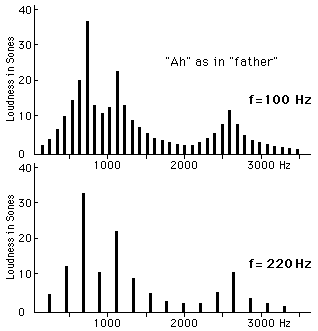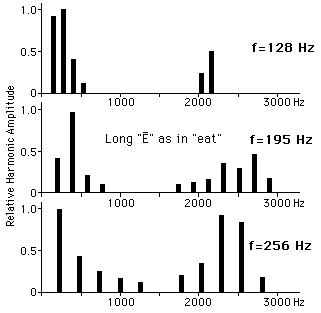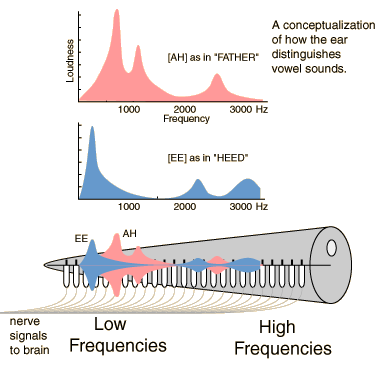Same Vowel, Different Pitch

|
To explain how the ear can recognize a vowel sound as the same vowel, even though it is sounded at different pitches, the idea of vocal formants is invoked. This is data from Benade showing that an "Ah" vowel involves a similar envelope of harmonics when sounded at different frequencies.  |
Voice concepts
Musical instruments
Reference
Benade
Ch. 19
| HyperPhysics***** Sound | R Nave |



